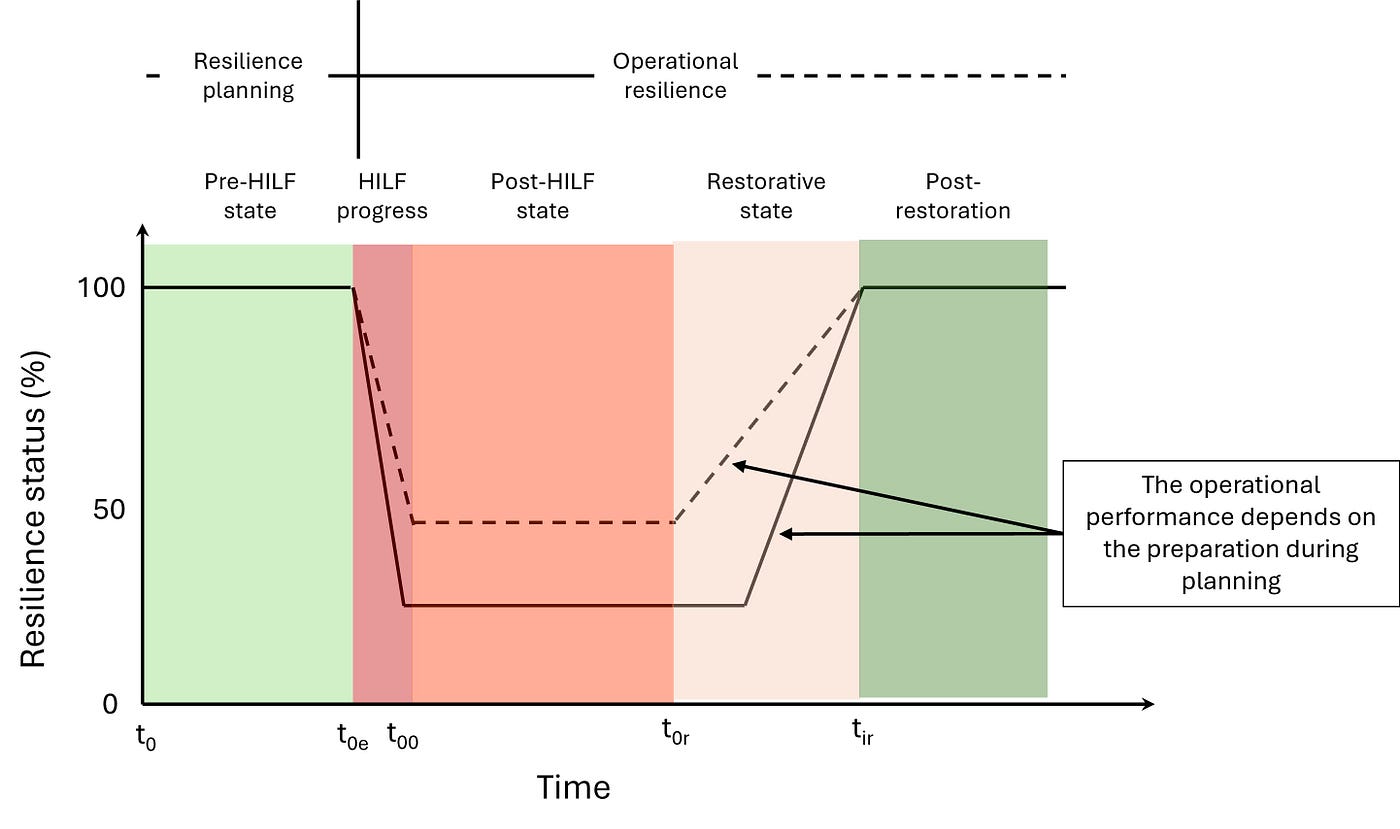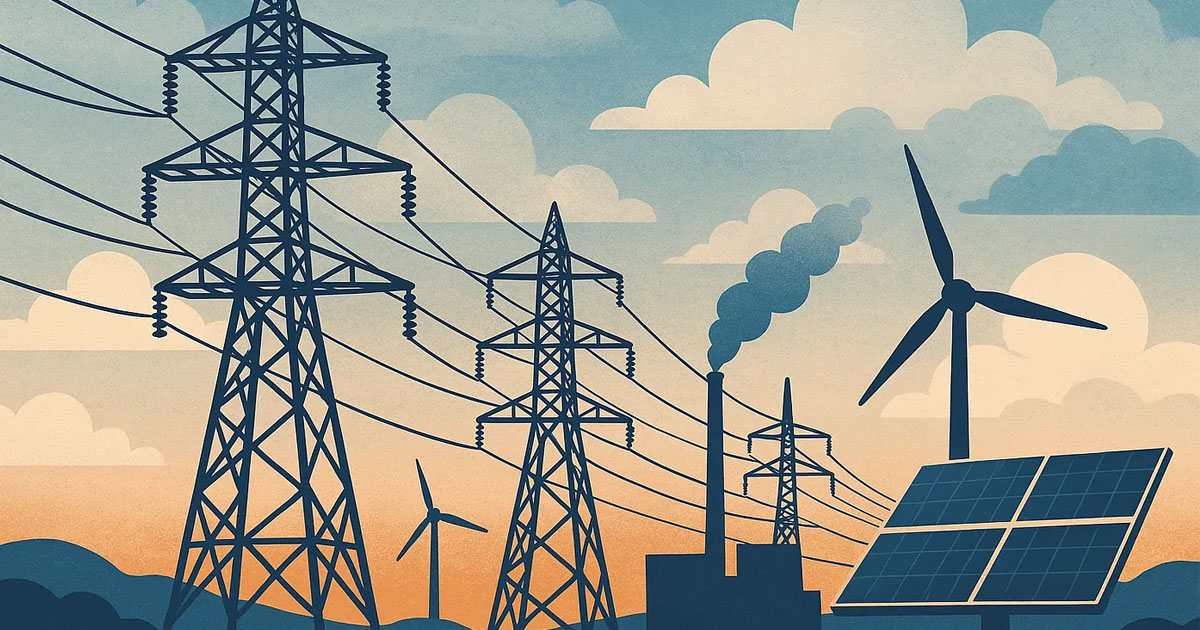Current and Future Trends with A Look at Recent HILF Events
The consumption of energy and its transformation into electricity are essential for societal progress. As the Rockefeller Foundation highlights, electricity is a key driver of economic competitiveness and prosperity more now than in previous centuries. Even developing economies depend heavily on stable, reliable, and secure electric power systems.
This reliance has fostered technological advancements and elevated overall quality of life. However, it also highlights the pressing need to modernize aging power infrastructure, ensuring a resilient and dependable electricity supply for both consumers and critical loads.
The safety and reliability of power systems have been fundamental concerns since the inception of electric power infrastructure, initially with a focus on transmission systems due to their critical role in overall operation. In distribution systems, safety, planning, and availability are equally crucial, as they ensure the efficient delivery of electricity from transmission networks to end users.
To assess system reliability, regulators and utilities have developed service quality indicators, providing metrics for evaluating performance. Reliability studies in distribution systems rely on infrastructure and equipment data to estimate restoration time following an outage. These outages, often frequent but short in duration, are factored into the power system design. However, the cumulative downtime over a year can negatively impact service quality indicators, resulting in penalties intended to compensate affected customers.
Beyond routine outages, more severe threats can disrupt the power flow and delivery. Although rare, these events can inflict significant damage on the system. The ability to recover from such catastrophic failures is tied to power system resilience. While no universally agreed-upon technical definition exists, experts concur that resilience-related disruptions are characterized by high-impact and low-probability occurrences.
Several factors influence distribution system resilience, including natural disasters and human-caused disruptions such as cyber-attacks, workforce fluctuations, or other social phenomena. When resilience is compromised, the consequences can extend beyond infrastructure damage, affecting vulnerable populations and society.
Natural disasters have become a driving force in shaping research, industry focus, and academic discourse on resilience within power system design, planning, and operation. As climate change intensifies, high-impact events are occurring with increasing frequency and severity, posing greater challenges than in previous years. In response, ensuring the resilience of power systems has become a priority for their maintenance, operation, expansion, and future development.
Resilience studies examine the ability of geographic regions and their populations to prepare for, respond to, recover from, and adapt to both present and future disruptive events. While resilience is defined differently across various domains, all definitions converge on a key point: resilience is shaped by high-impact, low-frequency (HILF) risks.
Within the context of power systems, resilience refers to the system’s capacity to withstand catastrophic events and restore normal operations efficiently. Over the years, various models have been developed to analyze resilience, including the resilience trapezoid — a graphical tool used to track a system’s response and recovery over time when exposed to HILF events, whether individually or in combination.

In Figure 1, the left side of the trapezoid represents the planning for resilience phase, encompassing all activities undertaken by utilities to identify potential hazards and proactively prepare their infrastructure and teams for effective threat response. The right side illustrates operational resilience metrics, which assess the extent of operational degradation following a HILF event. These metrics also quantify the time and effort required to restore the power system to its pre-event state. Additionally, these technical efforts are measured in economic terms, reflecting the investments utilities make to strengthen their ability to withstand and successfully recover from HILF events. These investments include infrastructure upgrades, new development projects, customer programs, and grid enhancements that enable users to integrate their own distributed generation.
However, the U.S. Department of Energy (DOE) acknowledges that there are no widely accepted metrics for measuring grid resilience. As a result, federal law does not mandate specific resilience requirements for electric systems. Instead, the power grid’s ability to adapt to changing conditions and recover quickly from disturbances is inherently embedded within the DOE’s reliability framework.
The destructive nature of HILF events presents a significant challenge to the continuous operation of the power grid. Resilience, in this context, serves as a key metric for assessing the ability of electric infrastructure to not only maintain service but also recover swiftly following a HILF event.
Current research on resilience is progressing toward establishing a unified definition and standardized indicators that encompass the complexities of power system operation, planning, and maintenance. As with reliability, achieving this standardization requires identifying the critical factors that influence a power system’s response to HILF events.
Recent studies on integrating resilience indicators into power system planning propose assessing infrastructure risk through four key factors: Hazard, Exposure, Vulnerability, and Response. These indicators help evaluate both the potential causes and consequences of electrical infrastructure exposure to natural disasters or extreme events. By characterizing risk more effectively, they enable utilities to identify and implement necessary measures to mitigate the impacts of such disruptions.
Risk characterization is strongly supported by data from various disciplines, spanning both public and private sources. With the increasing systematization of technical data across various domains, a vast array of geographically referenced data sources now exists, covering infrastructure, social and economic characteristics, environmental factors, and more. While some datasets are specifically generated for power systems applications, others originate from external sources unrelated to the electric power industry. These broader databases have been widely utilized in fields such as social sciences, demographics, and government-led socio-economic studies. Among the diverse data layers available are soil composition, elevation, forestry and land use patterns, risk indices, and additional environmental metrics. Utilities use these layers to identify infrastructure risks, schedule preventive measures like vegetation management and flood forecasting, and pinpoint vulnerable areas and critical loads, including hospitals and first responder facilities.
Recent HILF events and how utilities are responding to them
As previously mentioned, HILF events are defined by their destructive nature and widespread disruption to customers, critical services, and infrastructure. While infrequent, these events occur globally, reinforcing the need for utilities to continuously enhance their preparedness in both the short and long term. This section examines two recent HILF events — one in the U.S. and one internationally — to underscore the importance of resilience planning and explore how utilities are advancing their understanding and management of these challenges.
On April 28, 2025, a blackout affected Spain and Portugal, marking a significant HILF event. Within just five seconds, the disruption led to a sudden loss of approximately 15 GW of power, equivalent to 60% of Spain’s total electricity demand, causing widespread system instability. On Monday the 28th, the Iberian Peninsula experienced a near-total power outage, affecting millions across Spain, Portugal, Andorra, and the Basque region of France. According to Reuters, this was the largest blackout in European history.
During a conference call with reporters, Spanish grid operator Red Eléctrica outlined the sequence of events. Shortly after 12:30 p.m., the grid experienced an initial event resembling a loss of power generation. While it stabilized almost immediately, a second event struck 1.5 seconds later, triggering further instability. 3.5 seconds after the first event, the interconnector linking Catalonia with southwest France disconnected due to grid instability. This led to a massive system failure, ultimately causing the collapse of the power grid and the sudden loss of 60% of Spain’s generation, as reported by Politico. Bloomberg’s energy and commodities columnist Javier Blas described this cascading failure as an “unexplained disappearance” of generation capacity.
Late on the same day, power began returning to parts of the Iberian Peninsula. The blackout brought both nations- Spain and Portugal- to a standstill, disrupting air travel, halting public transportation, and forcing hospitals to suspend routine operations. So far, the exact cause remains undefined. However, independent data collected by some authors suggests that a massive disconnection of generation following inter-area oscillations may have triggered the event. This disruption indirectly led to voltage instability, which in turn caused Rate of Change of Frequency (RoCoF) relays to trip, disconnecting a significant portion of generation. The resulting loss of synchronism ultimately led to a widespread blackout. However, this event and its causes are still subject of investigation.
On April 29, severe storms struck the Pittsburgh area, causing significant damage to the electrical infrastructure and leaving over 400,000 customers in Pennsylvania without power. The local utility, Duquesne Light Company, reported that strong winds uprooted trees, resulting in more than 20,000 separate hazard reports across the electric grid. Restoring the grid to its pre-event state required extensive repair efforts, with utility crews working for more than five days in coordination with local authorities to address infrastructure damage. Tragically, the storm claimed four lives.
Similar events have been reported in previous years across the U.S. and worldwide, where infrastructure has suffered significant damage due to HILF events. These incidents have posed serious challenges for utilities and local authorities, testing their ability to restore essential services and return operations to normal after being affected.
Summary
Resilience is an evolving discipline in the domain of electric power systems. The examples presented in this blog highlight the growing importance of resilience studies and plans, especially given society’s increasing dependence on electricity. Efforts are underway to bring together the public and private sectors to develop more effective methods for assessing and responding to these events, which can be triggered by a wide range of factors.
These interdisciplinary efforts supported by data gathered across the years are fundamental to providing a more reliable, safe, affordable and quality service that can endure extreme events, helping first responders and society to better respond to HILF events when they occur.
At New Math Data we work with customers of various sizes to build software systems for electrical grid resilience. Please reach out or comment below if you would like to discuss!
Further reading
[2] https://energyforgrowth.org/project/the-modern-energy-minimum/
[12] “Global Biodiversity Information Facility (GBIF) | U.S. Climate Resilience Toolkit.” https://toolkit.climate.gov/tool/biodiversity-information-serving-our-nation-bison (accessed Sep. 12, 2022).
[13]https://www.everycrsreport.com/files/20180502_IN10895_b74bbaf13d1c87cf3bcd377022a1596667834782.pdf
[19] https://www.reuters.com/world/europe/large-parts-spain-portugal-hit-by-power-outage-2025-04-28/
[21]https://www.linkedin.com/feed/update/urn:li:activity:7326913857451384833/
[22] https://www.nytimes.com/2025/04/30/weather/northeast-storms-outages-deaths-pennsylvania.html
[23] https://www.cbsnews.com/pittsburgh/news/pittsburgh-power-outages-storm-damage/

